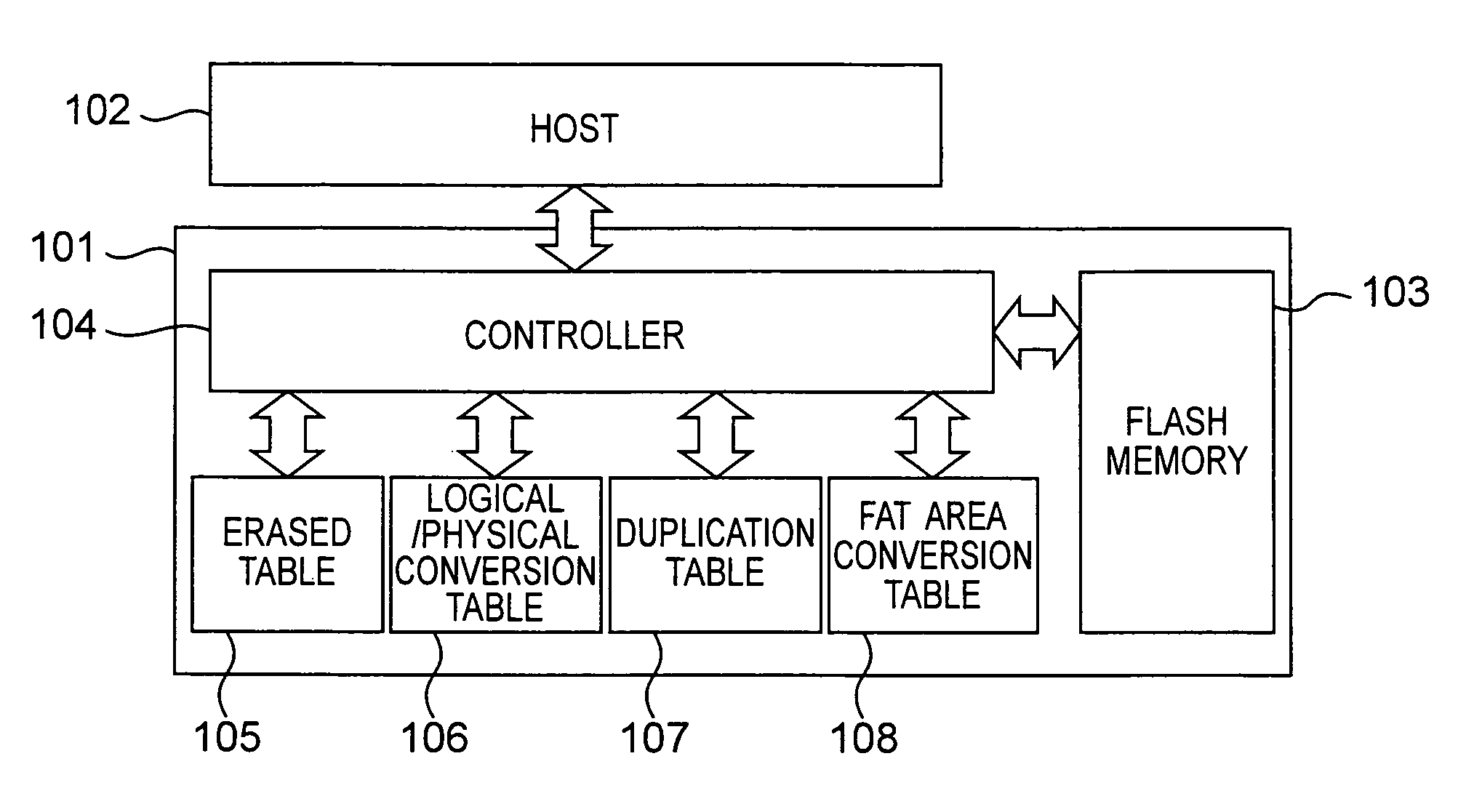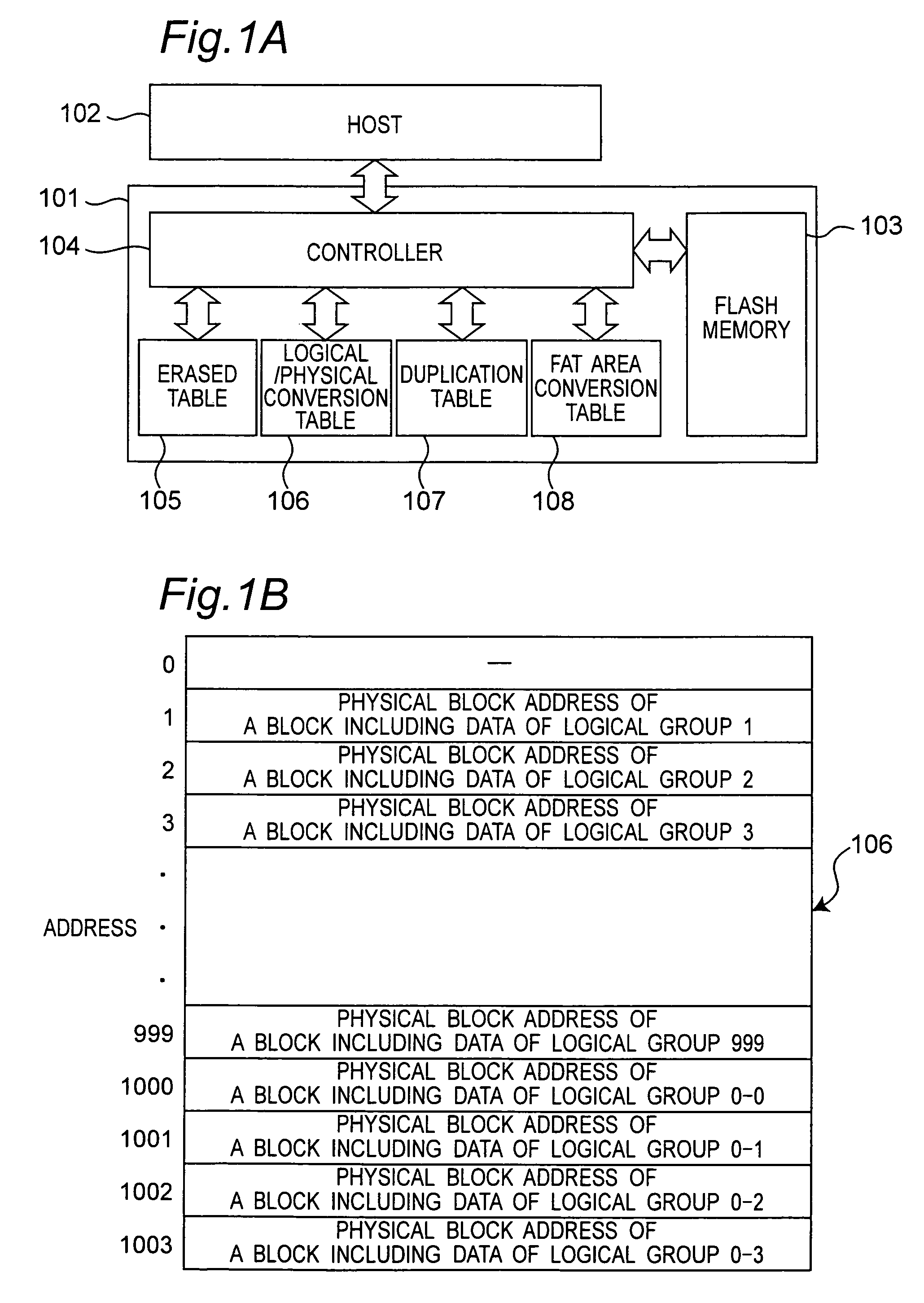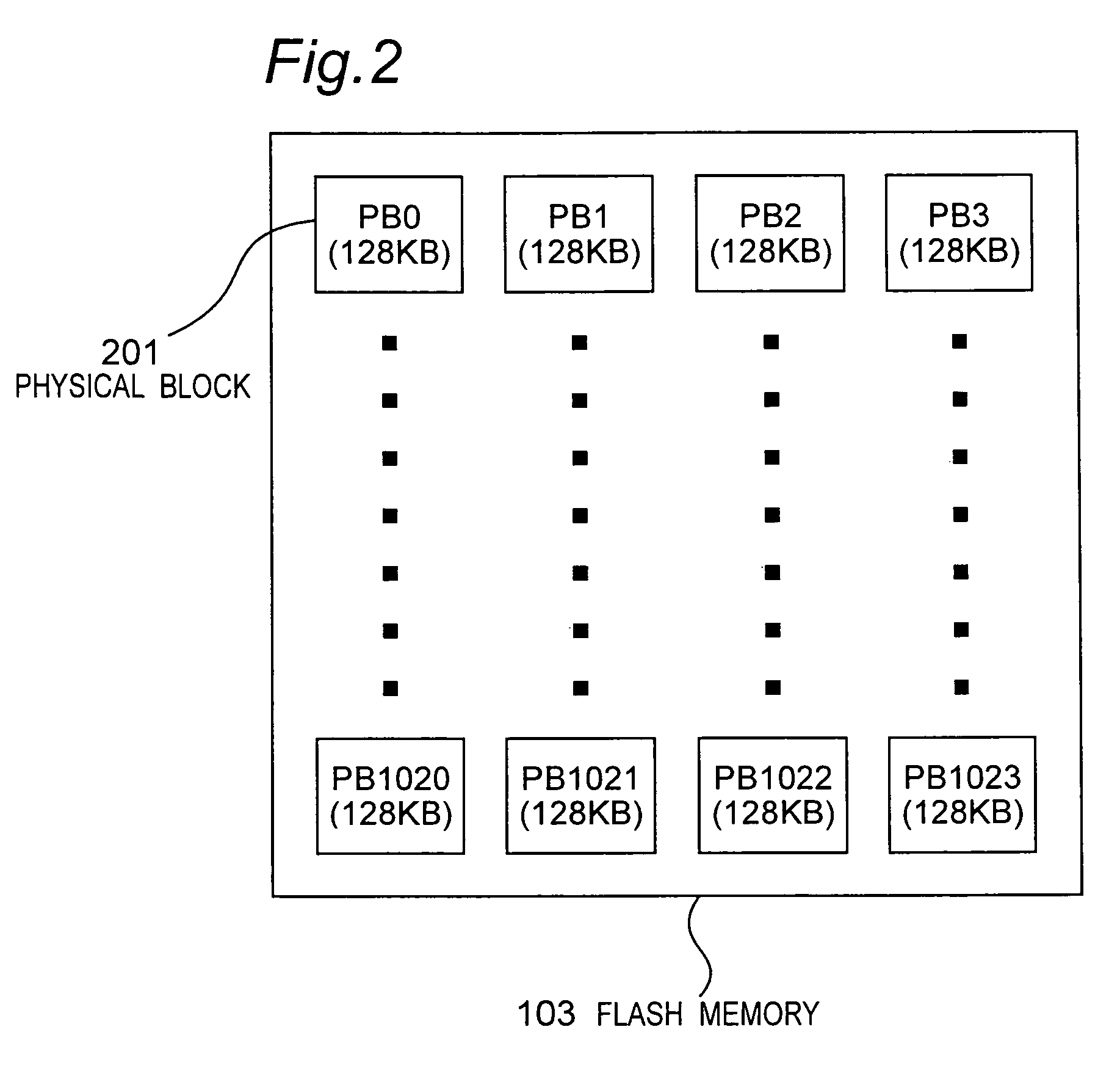Reduction of fragmentation in nonvolatile memory using alternate address mapping
a nonvolatile memory and address mapping technology, applied in the direction of memory address formation, micro-instruction address formation, allocation/relocation, etc., can solve the problems of deteriorating write performance, large number of physical blocks, and long time-consuming write processing, so as to reduce the number of copying and erasing processing and improve the efficiency of writing processing
- Summary
- Abstract
- Description
- Claims
- Application Information
AI Technical Summary
Benefits of technology
Problems solved by technology
Method used
Image
Examples
example 1
Example of Sequential Write Mode
[0213]Referring now to FIG. 25 through FIG. 31, an example from new write mode to sequential write mode will be explained. In FIG. 25, when data writing is requested newly from the host 102 to regions of logical block 0x0010, logical sectors 0x0020 through 0x003F, the new writing (S24) takes place in the case of no registration in the duplication information (S12), and data is written to the physical block 100 which is an erased block.
[0214]Under the above-mentioned situation, the duplication information 107b of the duplication table 107 is set as follows. The value of “logical block address” is set to logical address 0x0010 designated by the host 102. The value of “destination physical block address is set to 0x0000 which corresponds to the logical block address of 0x0010 in the logical / physical conversion table. The value of “destination physical block address” is set to 0x0100 indicating the block address of the physical block 100 to which the data...
example 2
Example of Overwrite Mode
[0220]Referring now to FIG. 32 through FIG. 34, description will be made on an example in the case of overwrite mode from new write mode. In FIG. 32, when a request is made by the host 102 to newly write data to regions of logical block 0x0010 and logical sectors 0x00E0 through 0x00FF, the data is written to the physical block 100 which is the erased block.
[0221]Under the above-mentioned situation, the duplication information 107b of the duplication table 107 is set as follows. “logical block address” is set to the logical address 0x0010 designated from the host 102. “destination physical block address” is set to 0x0000 which is a value that corresponds to the logical block address 0x0010 in the logical / physical conversion table. “destination physical block address” is set to 0x0100 which indicates the block address of the physical block 100 to which the data is to be written. “destination top page logical address” is set to 0x00E0 which is a value of the he...
example 3
Aggregation of Overwritten Blocks
[0224]Referring now to FIG. 35 and FIG. 36, description will be made on the example of aggregation processing of overwritten blocks. As shown in FIG. 35, the data lastly overwritten in the physical block 100 is copied to the erased physical block 101. In the physical block 101, it is necessary to write the data read out from the “source physical block” the of duplication information 107b in the remaining region (pages 8 through 3F), but in this example, since 0x0000 which indicates an invalid value is stored in the “source physical block” of the duplication information 107b, a predetermined data (FF) is written.
[0225]Thereafter, as shown in FIG. 36, the physical block 100 is erased. Along with this, the duplication information concerning the physical block 100 is initialized, and at the same time, a physical block 101 is registered to the logical / physical conversion table 106.
PUM
 Login to View More
Login to View More Abstract
Description
Claims
Application Information
 Login to View More
Login to View More - R&D
- Intellectual Property
- Life Sciences
- Materials
- Tech Scout
- Unparalleled Data Quality
- Higher Quality Content
- 60% Fewer Hallucinations
Browse by: Latest US Patents, China's latest patents, Technical Efficacy Thesaurus, Application Domain, Technology Topic, Popular Technical Reports.
© 2025 PatSnap. All rights reserved.Legal|Privacy policy|Modern Slavery Act Transparency Statement|Sitemap|About US| Contact US: help@patsnap.com



